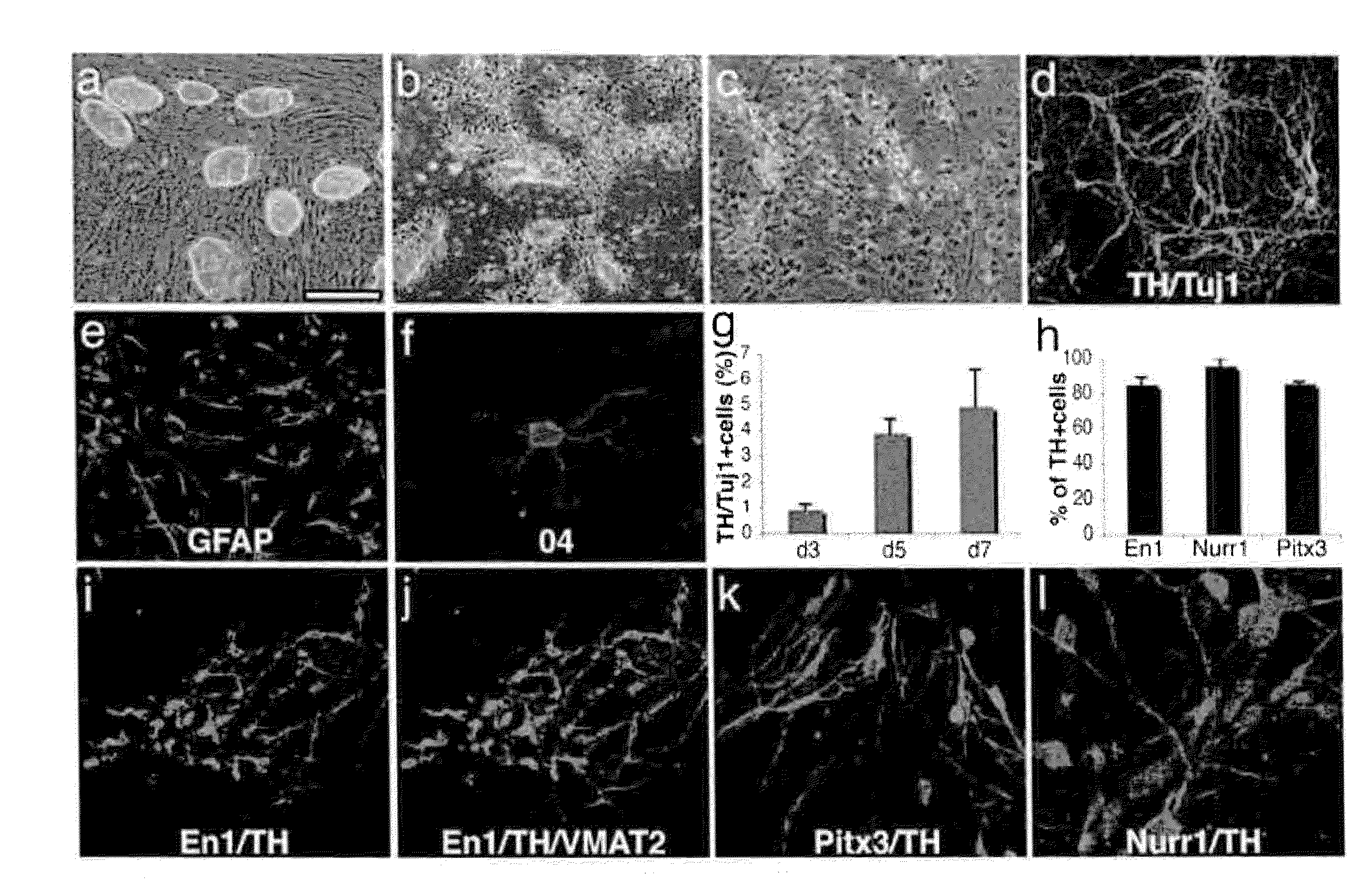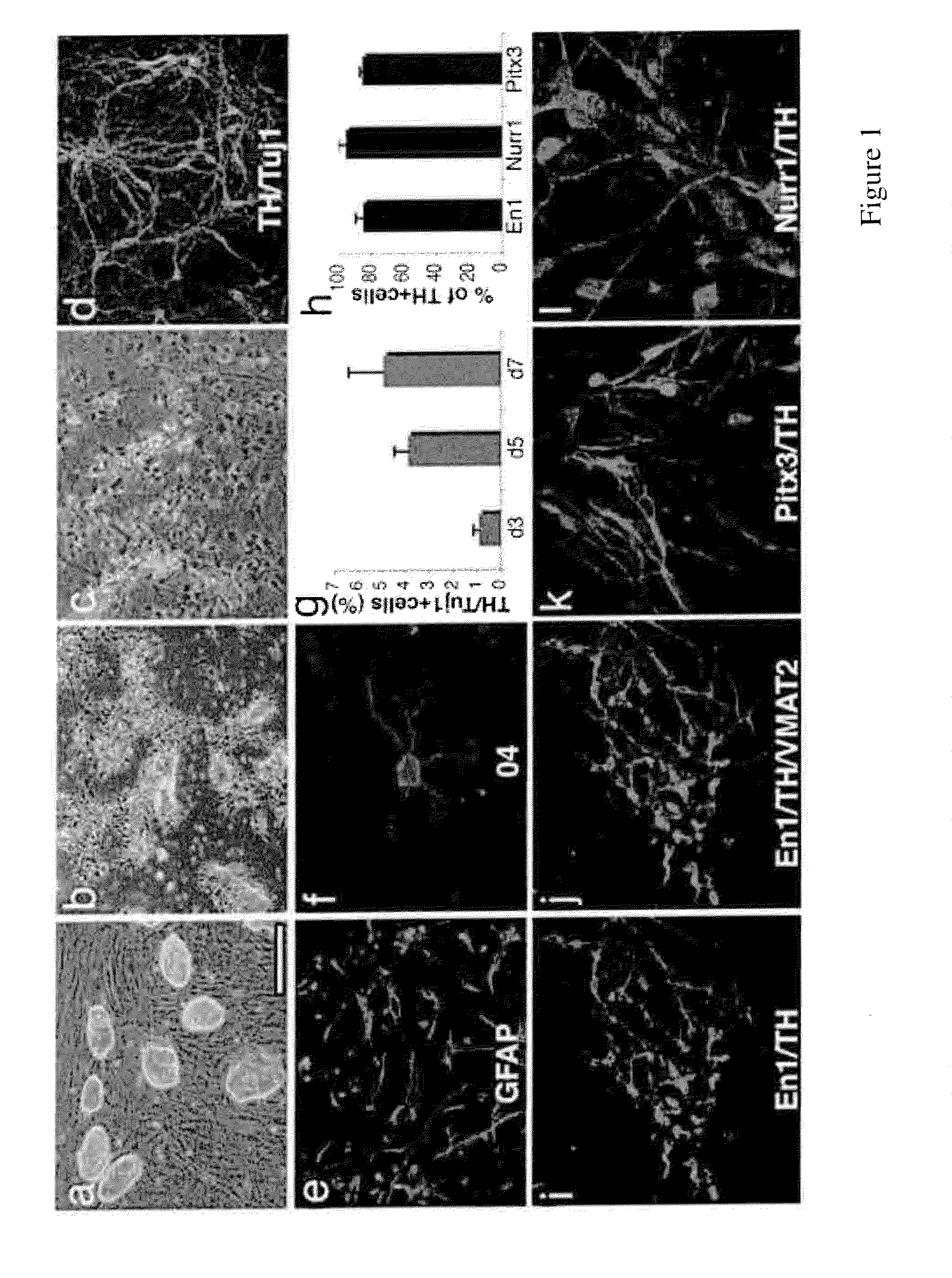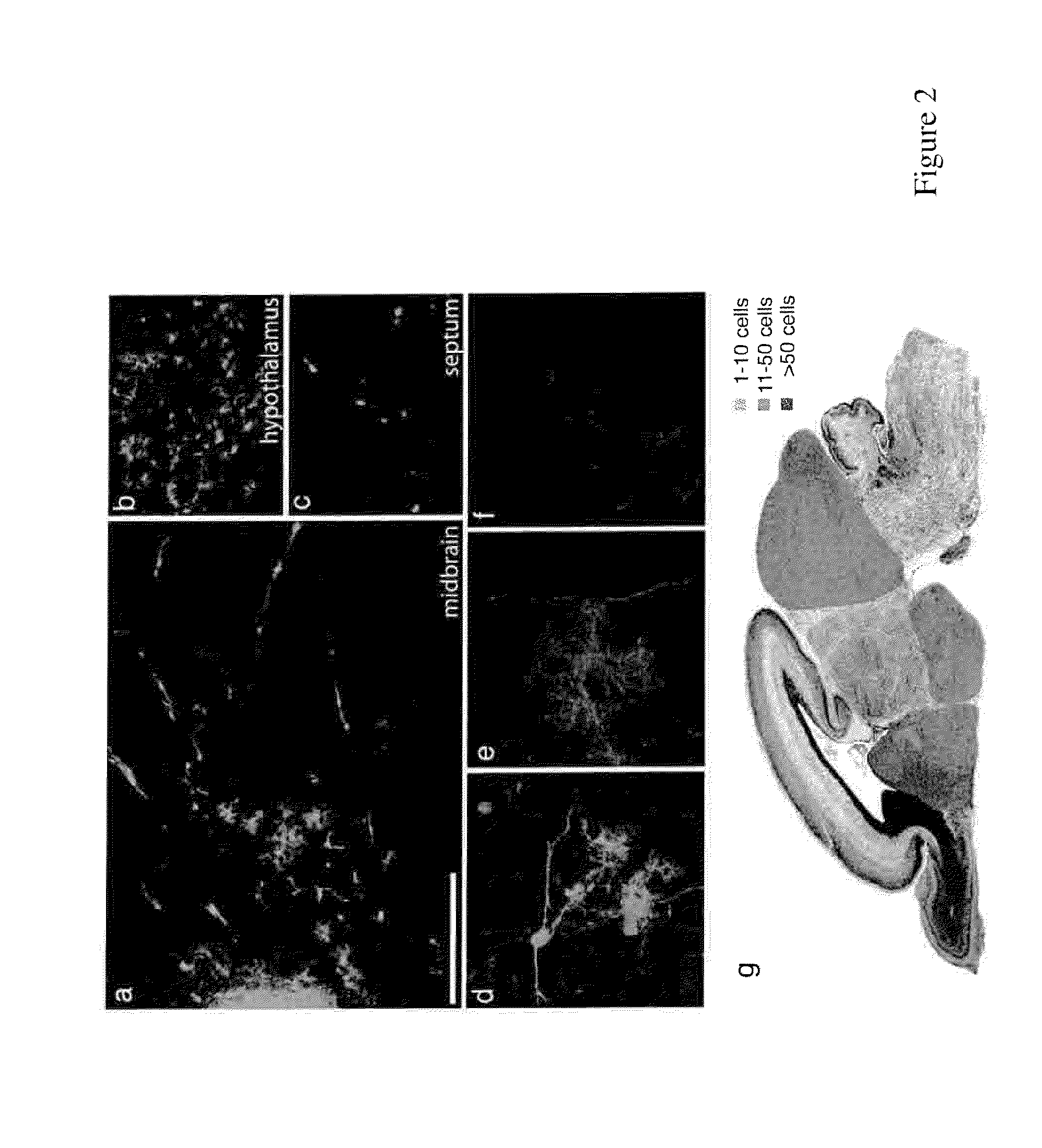Neural stem cells derived from induced pluripotent stem cells
- Summary
- Abstract
- Description
- Claims
- Application Information
AI Technical Summary
Benefits of technology
Problems solved by technology
Method used
Image
Examples
example 1
Neural Cell Production from Reprogrammed Fibroblasts
[0048]Nanog-selected iPS cell lines N8, N10 and N14, the Oct4-selected iPS cell lines O9 and O18 (Wernig et al., Nature 448: 3181-324, 2007), and the non drug-selected iPS cell line OG-14 (Meissner et al., Nat. Biotechnol. 25: 1177-1181, 2007) were subjected to a multi-stage differentiation protocol, which has been previously developed in ES cells (Lee et al., Nat. Biotechnol. 18: 675-679, 2000) with slight modifications. Briefly iPS cells were dissociated using trypsin (0.05%) and purified by attachment to tissue culture dishes for one hour. Embryoid bodies (EBs) were allowed 3-4 days to form after plating of iPS cells in bacterial dishes in DMEM media containing 10% defined FBS (Sigma-Aldrich), 2 mM L-glutamine (Invitrogen), 1×NEAA (Invitrogen), 10 mM HEPES (Invitrogen), 1 mM O-mercaptoethanol, 100 U / ml penicillin and 100 μg / ml streptomycin (Invitrogen) (EB media). EBs were allowed one day to attach to tissue culture dishes and n...
example 2
iPS-Derived Neural Precursor Cells Migrate and Differentiate into Neurons and Glia Following Transplantation
[0051]Neural precursor cells were derived from iPS cells that had been infected with a GFP-expressing lentivirus (Lois et al., Science 295: 868-872, 2002). About 100,000-300,000 FGF2-responsive neural precursor cells derived from the GFP-positive iPS cell subclones N8.2, N14.2, and O9.2 were transplanted in utero into the lateral brain ventricles of E13.5-E14.5 mouse embryos. The surgical procedures have been described previously (Brustle et al., Neuron 15: 1275-1285, 1995; Brustle et al., Proc Natl. Acad. Sci. USA 94: 14809-14814, 1997; Bjorklund et al., Proc. Natl. Acad. Sci. USA 99: 2344-2349, 2002). Transplanted mice were spontaneously delivered and analyzed one to nine weeks after surgery. The brains were serially sectioned and cells incorporated into the brain parenchyma (located at least 50 μm from clusters or the ventricular wall) were counted, morphologically assessed...
example 3
Transplantation of iPS Cell-Derived Midbrain Dopaminergic Neurons Results in a Functional Recovery from a 6-OHDA Lesion
[0061]One of the prime candidate diseases for cell replacement therapy is Parkinson's disease due to the localized degeneration of a specific cell type; the A9 dopaminergic neurons. As shown above, transplanted neurons from in vitro-generated from iPS cells were functionally integrated into the host brain. The following experiment demonstrates that iPS cell-derived neurons are capable of restoring the functional deficits caused by the selective loss of midbrain dopaminergic neurons.
[0062]Adult female Sprague-Dawley rats (200-250 g; Taconic) were unilaterally lesioned by 6-hydroxydopamine (6-OHDA) injection (8 μg, 2 μgμLmin) into the medial forebrain bundle (AP −4.3, Lat −1.2, DV −8.3) under sodium pentobarbital anesthesia. Rotational behavior in response to amphetamine (4 mg kg i.p.) was evaluated before and 4 weeks after 6-OHDA lesion. Animals were placed (randomiz...
PUM
 Login to View More
Login to View More Abstract
Description
Claims
Application Information
 Login to View More
Login to View More - R&D
- Intellectual Property
- Life Sciences
- Materials
- Tech Scout
- Unparalleled Data Quality
- Higher Quality Content
- 60% Fewer Hallucinations
Browse by: Latest US Patents, China's latest patents, Technical Efficacy Thesaurus, Application Domain, Technology Topic, Popular Technical Reports.
© 2025 PatSnap. All rights reserved.Legal|Privacy policy|Modern Slavery Act Transparency Statement|Sitemap|About US| Contact US: help@patsnap.com



